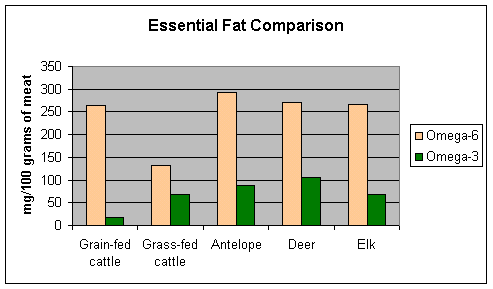Food Ecosystems
Agricultural Subsidies and the Pharmaceutical Industry Connection
You may have wondered why the cost of healthy food costs so much, it is because our government ensures that inflammatory produce is well funded [Cate]. Simple economics of supply and demand states that the amount of a commodity, product, or service available and the desire of buyers for it regulate the price. If we put our resources into subsidies to lower the price of healthy food, not only would this be an incentive for consumers, but it would reduce the economic burden of disease.

Fatty Acid Composition of Feed
Inflammatory omega-6 fatty acids greatly contribute to disease in cattle [Forage]. 97% of all cattle will be introduced to a feedlot at some point in their life, where they'll mostly be fed corn, soy, roughage, and wheat, all of which promote inflammation and hormonal imbalance. It truly matters that you care not only what we're consuming, but what our food is consuming as well.
Fatty Acid Composition of Livestock
You are what you eat, and everything your food eats as well. This chart depicts that the fatty acid composition of livestock, and relatively is dependent based on feed. Grass-fed cattle have a 2:1 omega-6:omega-3 ratio, whereas a grain-fed cow will have nearly a 15:1 ratio [Miller].
The Economic Burden of Disease
Heart Disease is the leading cause of death worldwide
1 in every 4 deaths
$555 Billion / 647,000 yearly
Diabetes: $327 Billion / 83,000 Deaths
Price of Insulin consistently increasing
Cancer: $94.4 Billion / 600,000 Deaths
Many premature deaths
Inflammatory Bowel Disease: $30B
Alzheimer’s: $226 Billion / 121,000 Deaths
Hospice care, long-term care, healthcare
Oral disease effects 3.9 Billion people worldwide
Half the population
44% with Dental Carries (untreated tooth decay) and 20% with periodontitis
United States Spends $110 Billion a year on oral health care
40% out of pocket expense
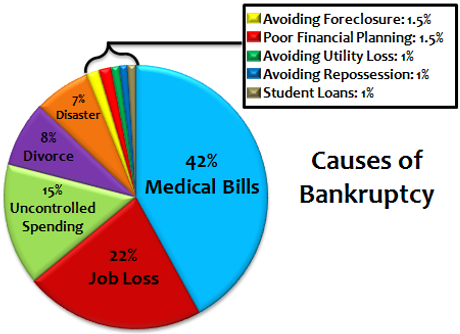
Water Fluoridation and Neurocognition
There is growing evidence that low-to-moderate fluoride exposure is associated with dysfunction of cholinergic system for children. Acetylcholinesterase (enzyme that breaks down acetylcholine) may partly mediate the prevalence of dental fluorosis and lower probability of having superior and above intelligence [Wang]. The risk of either developing dental fluorosis or having non-high intelligence rose by 22%.
There are zero studies regarding fluoride's impact on the microbiome composition of plaque. With growing evidence that there are neurocognitive disparities, we need to begin measuring if a potential microbial oral dysbiosis from fluoride is also influencing neurocognition.
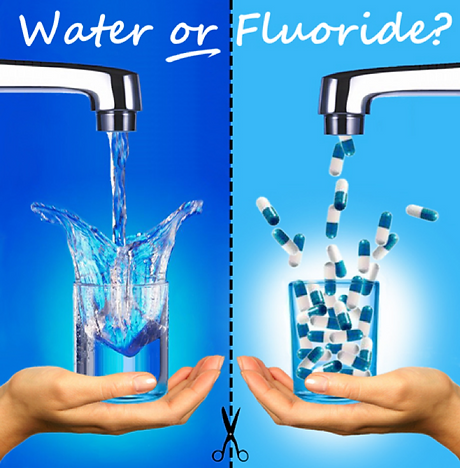
Fluoride and Intelligence Quotient (IQ)
How to make a cavity, the basics:
Sugar + Plaque = Acid
Acid + Tooth = Cavity
A lack of fluoride does not equate to more cavities, but an excess of sugar does. Cities are fluoridating our tap water, and dentists often prescribe oral fluoride supplementation for those on well water. Fluoride gels and toothpastes are common practice for dental hygiene. Fluoride binds to the surface of the enamel of a tooth, creating a slick surface, and making it more difficult for plaque to bind to it. Fluoride has prevented tooth decay and caries in low socio-economical areas[CDC Fluoride], but at what cost? In the figure, IQ and fluoride concentrations are negatively correlated, showing a higher propensity for how ingested fluoridation impacts brain health [Hirzy].
Fluoride may also cause gum sensitivity issues. Being the worlds strongest anion, it may actually be too strong and disrupt the oral microbiome. When healthy microbes are destroyed, the microbes shift into the inflammatory state, allowing fungi and pathogenic bacteria to grow in greater abundance [Canaboro]. This may lead to periodontitis, gingivitis, caries, and bone loss.

Climate Change
Atmospheric and Oceanic Temperature Anomalies: a Growing Concern
Atmospheric and Oceanic temperatures have rose considerably since the beginning of the industrial revolution. Humans have managed to increase the temperature of our climate in one century that would have generally taken a millennium. Climate change will displace people, produce famines, stronger storms, and extinction events.
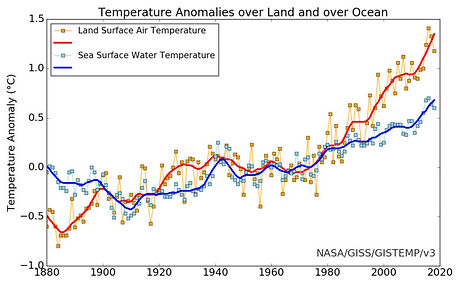
Atmospheric CO2 Pollution
Carbon dioxide is both a greenhouse gas and pollutant. High concentrations of CO2 retain higher levels of moisture, which traps heat. This leads to both longer periods of draught and heavier downpours and flooding, as well as accelerated glacial melting.
Carbon dioxide’s lifetime cannot be represented with a single value because the gas is not destroyed over time, but instead moves among different parts of the ocean–atmosphere–land system. Some of the excess carbon dioxide is absorbed quickly (for example, by the ocean surface), but some will remain in the atmosphere for thousands of years, due in part to the very slow process by which carbon is transferred to ocean sediments.

Coral Reef Bleaching
Coral reefs make up less than 1% of the Earth's home, but provide a home and nursery for up to 25% of all marine life. Carbon dioxide can dissolve in seawater, changing the pH. When carbon dioxide and water combine to form carbonic acid, the weak acid breaks into hydrogen and bicarbonate ions. More than 75 percent of Earth’s tropical reefs experienced bleaching-level heat stress between 2014 and 2017, and nearly 30 percent of reefs reached mortality level.

Ocean Acidification on Phytoplankton
Phytoplankton are microscopic marine plants that produce 80% of the world's oxygen, being the lungs of the planet. Plants utilize carbon dioxide to grow during a process called photosynthesis, which produces oxygen. Plankton are not just one species of sea creature, but, rather, a large variety of organisms. Ocean acidification may cause dramatic changes to phytoplankton communities, and in some case, many species may die out and others may migrate significantly as ocean acidification intensifies.

Deforestation and Famines
Deforestation is being driven by a great need for industrial agriculture. With deforestation, there is a reduction in CO2 uptake from photosynthesis, and an increase in methane emissions. Deforestation contributes to loss of biodiversity and nutrient deficiencies.
Even with additional space for farmland, there will be an increased risk of famines due in large part to the rise in atmospheric CO2. Droughts will dry up plants, and heavy down pours could drown them and sweep away nutrients, contributing to less food for the surrounding regions and a strain on the surrounding ecosystems.

Atmospheric Methane Pollution
Methane is a notable greenhouse gas, as it has been measured to trap heat 32 times stronger than CO2. Similarly to the CO2 emissions trend, methane emissions have steadily climbed since the beginning of the industrial revolution.

Accelerated Glacial Melt
Glacial melt poses a massive problem, as its melting releases stored methane gas and water. More methane accelerates glacial melting, an accelerated process that we may unlikely be able to stop. The arctic is melting 4 times faster than the rest of the world, and the result of all glaciers melting would increase sea levels by more than 7 meters.
The rise in sea levels may displace people, creating climate refugees. Melting glaciers also unveils ancient bacteria that could be more pathogenic than our ecosystems are equipped to handle.
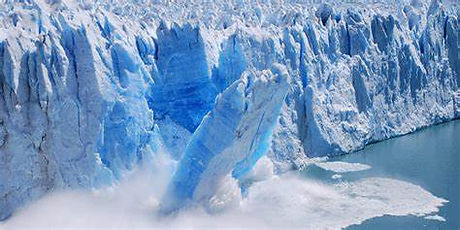
Polar Vortex
A polar vortex is a swirl of low-pressure air that brings with it frigid conditions that can cause frostbite in a matter of minutes. The Artic is warming at a faster rate compared to the rest of the planet. What used to be typical, the polar vortex would remain in a near beeline positioning, but warming is causing meandering of the polar jet stream to dip south. When a bomb cyclone occurs, excess heat from other areas of the planet pushes on the arctic cap, forcing cold air to be displaced further south.
[Stanford]

World Energy Consumption
With science and technology advancing in the 21st century, expect to see the world's energy demand increase alongside it. Abstaining from renewable energy investments in technology and infrastructure now will have long standing repercussions.
Fossil fuel is a limited resource and should not be relied upon beyond 2050. There is not one technology to meet all energy demands. Diversification in our renewable energy will allow us to meet both energy demand and climate goals. Renewable energy sources include biofuels, wind, solar, wave, hydroelectric, and nuclear. Upcycling carbon emissions poses a great reward for not only reducing operational expenses, but acts as a carbon negative technology.

Methane Emissions by Source
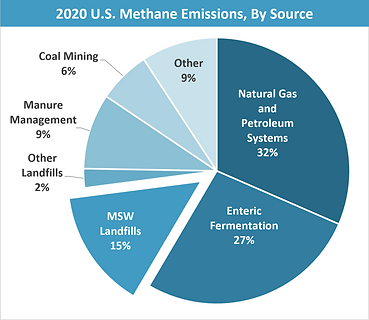
A global climate 1.5° Celsius degree warmer
1.5° Celsius degree = 34.7° Fahrenheit. We are projected to reach this threshold between 2032-2050.
[IPCC]

Correlation between CO2-eq Emissions and Land Surface Air Temperature.
Climate impact of CO2 emissions given business as usual estimates and net-zero predictions.
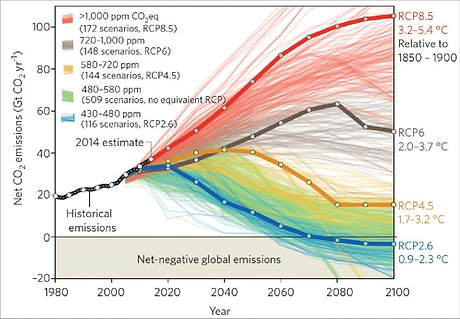
If Food Waste were a Country...
Food waste emissions would be the 3rd highest emitting country in the world.
46% of all food is wasted.

U.S. Food Waste Generation and Management
Residential food waste is the largest generator, increasing nearly 30% during the COVID-19 pandemic.

Citations
Canaboro
Canabaro A, Valle C, Farias M R, Santos F B, Lazera M, Wanke B. Association of subgingival colonization of Candida albicans and other yeasts with severity of chronic periodontitis. J Periodont Res 2013; 48: 428–432. © 2012 John Wiley & Sons A/S. Published by John Wiley & Sons Ltd.
Cate
Cate, John. “How Well Are Soy Farmers in the US Doing Now That They’ve Lost 90% of Their Exports to China and Are Now Being Propped by Socialist Policies? If Socialism Is so Bad, Shouldn't We Just Let Them Shut Down.” Quora.
CDC Fluoride
CDC. “Achievements in Public Health, 1900-1999: Fluoridation of Drinking Water to Prevent Dental Caries.” Oct 22, 1999, Volume 48, Issue 41, pages 933-940. https://www.cdc.gov/mmwr/preview/mmwrhtml/mm4841a1.htm.
Forage
US Dairy Forage Research Center, 1995 Research Summaries. http://www.eatwild.com/healthbenefits.htm
Fuss et al
Fuss, S., J.G. Canadell, G.P. Peters, M. Tavoni, R.M. Andrew, P. Ciais, R.B. Jackson, C.D. Jones, F.
Kraxner, N. Nakicenovic, C. Le Quéré, M.R. Raupach, A. Sharifi, P. Smith and Y.
Yamagata. 2014. “Betting on negative emissions.” Nature Climate Change, Vol. 4: 850–
853. doi:10.1038/nclimate2392.
Hirzy
Hirzy, W.J, Connect, Paul, Xiang, Quanyong, Spittle, B.J., Kennedy, D.C. “DEVELOPMENTAL NEUROTOXICITY OF FLUORIDE: A QUANTITATIVE RISK ANALYSIS TOWARDS ESTABLISHING A SAFE DAILY DOSE OF FLUORIDE FOR CHILDREN.” Fluoride 49(4 Pt 1): pages 379-400 (2016).
IPCC
IPCC, 2018: Global Warming of 1.5°C. An IPCC Special Report on the impacts of global warming of 1.5°C above pre-industrial levels and related global greenhouse gas emission pathways, in the context of strengthening the global response to the threat of climate change, sustainable development, and efforts to eradicate poverty [Masson-Delmotte, V., P. Zhai, H.-O. Pörtner, D. Roberts, J. Skea, P.R. Shukla, A. Pirani, W. Moufouma-Okia, C. Péan, R. Pidcock, S. Connors, J.B.R. Matthews, Y. Chen, X. Zhou, M.I. Gomis, E. Lonnoy, T. Maycock, M. Tignor, and T. Waterfield (eds.)]. In Press.
Miller
G.J. Miller, "Lipids in Wild Ruminant Animals and Steers." J. of Food Quality, 9:331-343, 1986 http://www.eatwild.com/healthbenefits.htm
Wang
Sumei Wang, Qian Zhao, Gaochun Li, Mengwei Wang, Hongliang Liu, Xingchen Yu, Jingwen Chen, Pei Li, Lixin Dong, Guoyu Zhou, Yushan Cui, Mengru Wang, Li Liu, Aiguo Wang. "The cholinergic system, intelligence, and dental fluorosis in school-aged children with low-to-moderate fluoride exposure." Ecotoxicology and Environmental Safety, Volume 228, Dec 2021.


